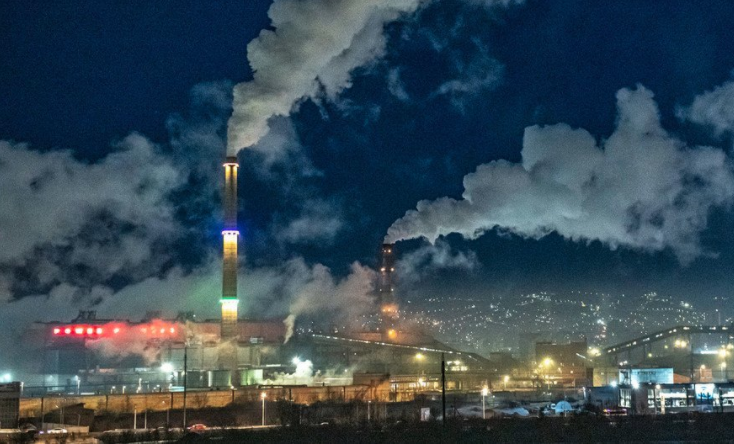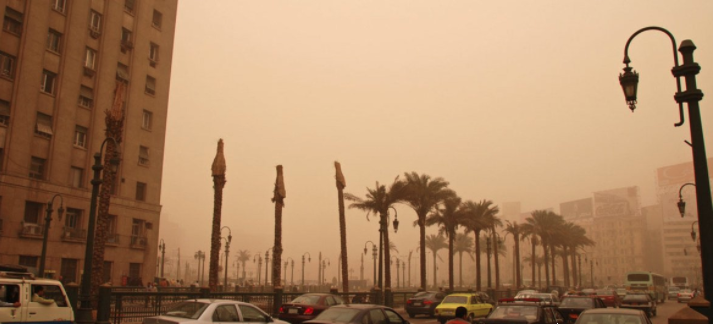CAIRO – 7 April 2022: The World Health Organization has warned that nearly all of the world's population, about 99 percent, breathes air that exceeds air quality limits set by the organization, and threatens their health.
On Monday, the World Health Organization published a 2022 update of its air quality database. The update was released ahead of World Health Day, which this year celebrates the theme "Our Planet, Our Health."
The 2022 database aims to monitor the state of the world's air and feed into the progress tracking of the Sustainable Development Goals.
The new database is the most comprehensive, to date, in its coverage of air pollution exposure on Earth.
The organization noted that a record number of more than 6000 cities in 117 countries monitor air quality, but the people who live in it are still breathing in unhealthy levels of fine particulate matter and nitrogen dioxide, as people in low and middle-income countries have the highest rates of exposure to these particles.

The findings have prompted the World Health Organization to highlight the importance of reducing fossil fuel use and taking other concrete steps to reduce levels of air pollution.
The organization's update provides, for the first time, ground-based measurements of average annual concentrations of nitrogen dioxide (NO2), a common pollutant in urban areas.
It also includes measurements of fine suspended particles with diameters equal to or less than 10 µm or 2.5 µm.
Both groups of pollutants arise from human activities related to the combustion of fossil fuels.

Particulate matter, particularly PM2.5, has the ability to penetrate the lungs and enter the bloodstream, causing cardiovascular, brain and respiratory effects. There is new evidence that these particles affect other organs and cause other diseases as well.
Nitrogen dioxide is associated with respiratory illness, particularly asthma, leading to respiratory symptoms (such as coughing and breathing difficulty), hospitalization and emergency room admissions.
The World Health Organization last year revised its air quality guidelines, making them more stringent in an effort to help countries better assess the health of their air.
Many governments have begun taking steps to improve air quality, but the World Health Organization is calling for accelerated action to:
- Adopt, review and implement national air quality standards in accordance with the latest WHO air quality guidelines.
- Monitoring air quality and identifying sources of air pollution.
- Support the transition to the exclusive use of clean household energy for cooking, heating and lighting.
- Build safe, affordable, and pedestrian- and bike-friendly public transport networks.
- Applying stricter standards on vehicle emissions and efficiency; and impose mandatory vehicle inspection and maintenance.
- Investing in energy-efficient housing and power generation.
- Improving the industrial sector and municipal waste management.
- Reducing the burning of agricultural waste, forest fires, and some agroforestry activities (such as charcoal production).
High-income countries experience less particulate matter pollution, but most cities have a nitrogen dioxide problem.
In 117 countries that monitor air quality, air in 17 percent of cities in high-income countries does not meet WHO air quality guidelines.

In low and middle-income countries, air quality in less than 1 percent of cities meets the thresholds recommended by the World Health Organization.
Globally, low and middle-income countries continue to have greater exposure to unhealthy levels of particulate matter than the global average, but the patterns of nitrogen dioxide are different, and show less difference between high, low and middle income countries.
People who live in low and middle-income countries are most exposed to air pollution. They are also the least covered in terms of air quality - but the situation is improving.

Europe and, to some extent, North America remain the regions with the most comprehensive data on air quality available. In many low and middle-income countries, PM2.5 measurements are still not available. They saw significant improvements in measurements between the last database update in 2018 and the update released Monday, with an additional 1,500 human settlements in these countries beginning to monitor air quality.
World Health Day, celebrated on April 7, will focus global attention on the urgent actions needed to keep people and the planet healthy and foster a movement to create health-focused societies.
The World Health Organization estimates that more than 13 million deaths worldwide each year are due to avoidable environmental causes.
Comments
Leave a Comment